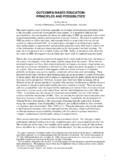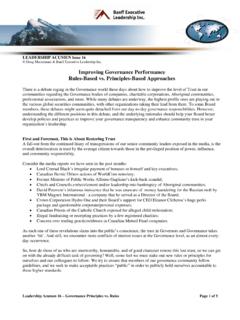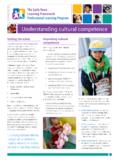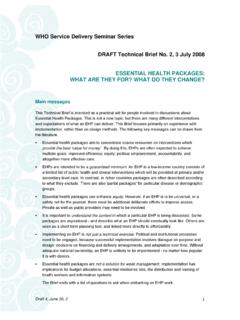Transcription of Supporting Children and Young People with Type …
1 Supporting Children and Young People with Type 1 Diabetes in Educationimproving the education experience for everyoneMaking Connections is a programme to support Young People , parents/carers, healthcare providers and teachers to work together to improve the transition to use this guideEach section of this guide highlights the responsibilities of each of the partners involved and is colour coded accordingly throughout the document. Local Authority & School Parent/Carer child / Young Person Local Paediatric Diabetes TeamThroughout this guide reference is made to schools and teachers, however the advice given is also applicable to early years settings and the further education environment. Anyone caring for Children and Young People , including teachers, other school staff and day care staff in charge of Children have a common law duty of care to act like any reasonably prudent parent.
2 Staff need to make sure that Children and Young People are healthy and safe. It is for local authorities, schools and governing bodies, settings and management groups to work out their own policies in the light of statutory responsibilities and their own assessment of local needs and resources. This document will act as a guide as to what these policies should Children and Young People with Type 1 Diabetes in Education3 Contents1 Introduction 42 What is Diabetes? 7 3 Why Is Controlling Blood Glucose Important? 84 General Information and Training 105 General Care Management Plan 126 Exam Planning 147 Injecting and Storing Insulin 178 Blood Glucose Monitoring 209 Hypoglycaemia (Low Blood Glucose) 2210 Hyperglycaemia (High Blood Glucose) 2411 Food and Drink at School 2512 Physical Activity at School 2713 Participation in School Trips 2814 Early Years Setting 3015 Frequently Asked Questions (FAQs) 32 Acknowledgements 34 References 34 Appendix.
3 Example Care Management Plan 35 Compiled by Steve Birnie, Paediatric & Adolescent Diabetes Co-ordinator Scotland on behalf of Childhood and Adolescent Diabetes ScotlandPhotography from NHSS cotland Photo Library, Crown Copyright 2009 and Diabetes UKJune 2014 You can copy or reproduce the information in this document for educational purposes. You must not make a profit using information in this document. Commercial organisations must get our written permission before reproducing this care of a child or Young person with Type 1 diabetes in school is a team effort. Doing this successfully requires everyone involved to actively play their part. The aim of this document is to try and make that easier by outlining what each partner s responsibilities are and how they can be best carried information here has been gathered from policies already successfully operating in local authorities across Scotland and also identifies good practice.
4 It has been written in collaboration with teachers, parents, Young People and healthcare Children and Young People with Type 1 Diabetes in EducationType 1 diabetes is an auto-immune condition in which the body destroys the cells in the pancreas that produce insulin. Insulin is the hormone which regulates the level of blood glucose in the body and also enables cells to use that glucose to produce energy. Young People with Type 1 diabetes need to inject insulin or get insulin delivered by a pump on a daily basis in order to survive. Each day is a balancing act between the amount of food eaten, exercise taken and insulin injected to maintain a safe blood glucose level. This can be difficult for Children , Young People and their families to manage which is why support from school staff is so important.
5 Children and Young People with diabetes will need access to the equipment they require to monitor their blood glucose and be allowed to take the snacks and/or insulin required to correct it if necessary. It is important for staff to understand that if a child or Young person s blood glucose is low they will find it difficult to concentrate, as they will feel dizzy and unwell. If their blood glucose is high they may also feel tired, thirsty and need to go to the toilet a lot. The actions required to correct these situations are usually quite simple and will be covered in greater detail in later guide aims to help staff understand what to do and why it is so important for the child or Young person s safety and well-being that there is a plan in place to cover situations that may occur in are several policies and legislation that impact on the care of a child or Young person with diabetes in schools and these will be referenced as appropriate.
6 Put simply, there are two statutory bodies with responsibilities to Children with diabetes the local authority and the local NHS health local authority has a responsibility to ensure that every child reaches his or her full potential. It also has a duty to make reasonable adjustments to ensure a pupil does not suffer substantial disadvantage compared to other pupils as a result of their local NHS health board has a responsibility to ensure that every child is receiving the correct treatment to allow them to lead as normal and healthy a life as Children and Young People : The Charter (Scottish Executive 2004) and A Guide to Getting It Right For Every child (Scottish Government 2012) are two fundamental documents that should be at the heart of providing care for a child or Young person with diabetes in school.
7 A Guide to Getting It Right For Every child (GIRFEC) sets out the Scottish Government s approach to improving outcomes and wellbeing for all Children in Scotland, while the Children s Charter sets out what Children and Young People in Scotland need and expect to help protect them from harm. 6 Both documents stress the need to put the child or Young person at the centre and develop a shared understanding within and across agencies ( ).This document aims to help local authorities and schools to support another key principle highlighted by GIRFEC, which recommends there should be common tools, language and processes considering the Young person as a whole and promoting closer working where necessary with other agencies .The core components of GIRFEC refer to improving outcomes for Children and Young People through a shared understanding of their wellbeing.
8 They stress the need for an integral role for Children , Young People and their families in assessment, planning and intervention . All the core components, values and principles of the GIRFEC document can be applied to the needs of a child or Young person with diabetes in school. A plan to support the child or Young person should be put in place keeping these principles in mind. In order to maximise their potential, a child with diabetes will need the support of the school, teachers, healthcare professionals and their parents, if they are to maintain their blood glucose at a safe level which allows them to learn. They will also need support to manage the complex web of daily challenges they face to keep their blood glucose under control ( ).
9 This publication aims to: Set minimum expectations of support for Children / Young People with diabetes in educational establishments in Scotland. Clarify the role of educational staff who support Children with diabetes. Clarify the conditions of indemnity for staff who provide support for Children with diabetes. Outline the responsibility of the child / Young person and their parents/carers in managing their diabetes. Outline the responsibility of the school and local authority in Supporting a child with diabetes. Outline the responsibility of the paediatric diabetes teams in the provision of training and support for TeamSchoolPhysical activityFood & DrinkInsulinGoodDiabetesControlBlood Glucose TestingHyposTripsHypersCare Plan7 Supporting Children and Young People with Type 1 Diabetes in Education2 What is Diabetes?
10 Diabetes is a group of metabolic conditions characterised by high levels of glucose (sugar) in the blood stream (Craig, Hattersley & Donaghue, 2009). What is the difference between Type 1 diabetes and Type 2 diabetes?A child with Type 1 diabetes has an autoimmune condition in which their body has destroyed the cells that produce insulin. This means that they must administer insulin every day in order to survive. This also means that they need to monitor their blood glucose regularly, especially before exercise or if they feel unwell. In order to do this they will need access to their monitoring equipment (blood glucose meter and test strips) at all times. Therefore in primary schools it is recommended that this should be stored in their classroom; in secondary school they should carry it with them at all times.










